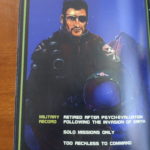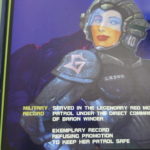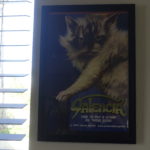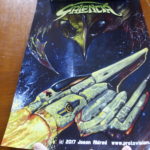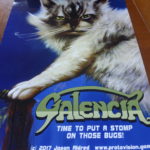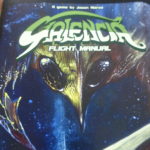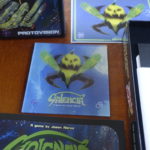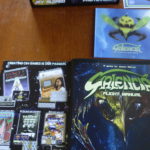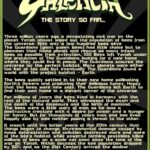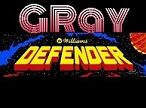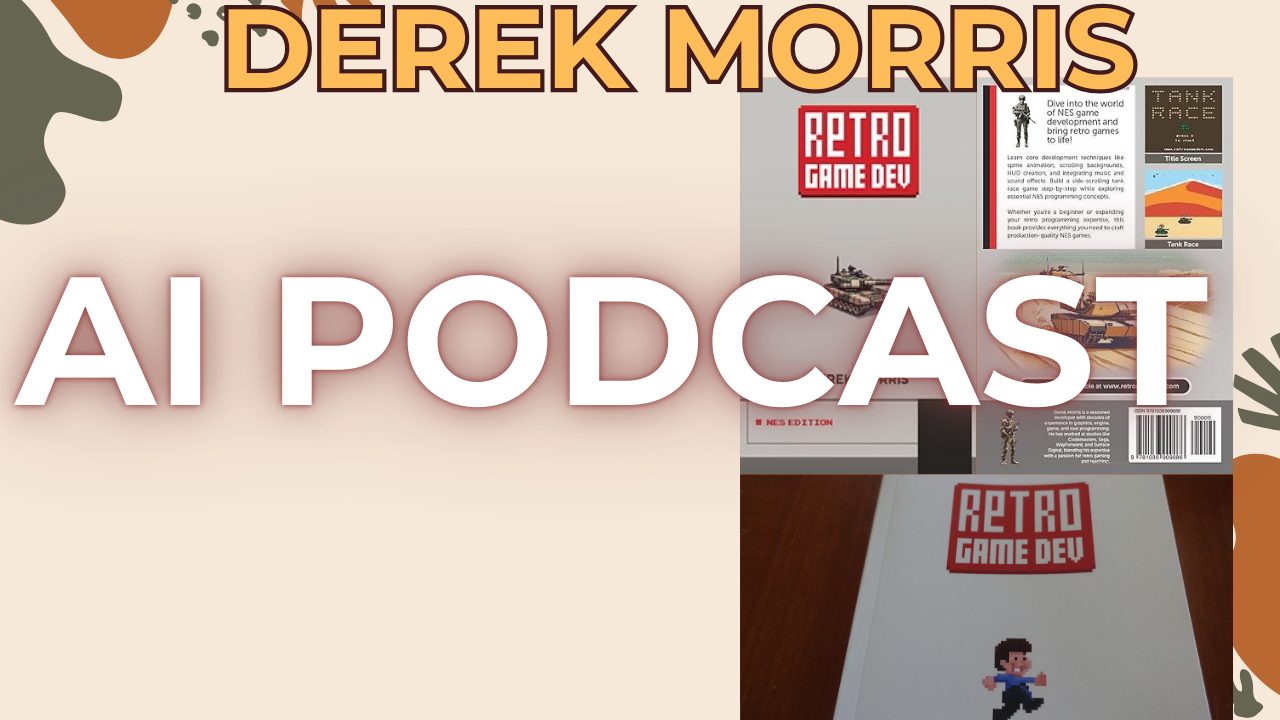Galencia for Commodore 64 Deep Dive Review
Background:
Galencia is a Galaga inspired space shooter published by Protovision and released in 2017 for the Commodore 64. It features an impressive 50 waves of enemies, including asteroid fields, challenge screens, and boss battles. Galencia also sports six unique SID tunes. It was programmed for NTSC as well as PAL hardware specifications. The main differences are as follows. In the NTSC version, the information that was presented in the top row of the screen has been shifted to the bottom row, including the ships remaining, score, and time remaining. Also, the other key difference is that the NTSC version plays faster due to some technical differences. The game’s programmer, Jay Aldred, stressed to me, Galencia was initially written in PAL format with NTSC added toward the end of the project. For the purposes of this review, I will be demonstrating the PAL version and I’ll be referring to Jay Aldred as “Jay”.

NTSC screenshot
You play as fighter pilot Ace Harper, tasked with saving the world from an invasion of bees. You are secure in knowing your colleague Amy Starbanger is on the Comms. She will occasionally chime in with a game tip here and there, temporarily replacing the games score at the top of the screen with her message. Galencia has a terrific back story which I’ll read from the manual here:

If there are any fans of bees out there, this story would be tough to come to grips with. I mean, I sort of feel for the bees, but we mustn’t let them destroy ALL of mankind!

Upon firing up Galencia, you will be presented with a Protovision introduction and accompanying music. This is followed by yet another nice piece of artwork with the games name prominently displayed and the word “Protovision” displayed in the bottom right corner. This screen plays a realistic sound of bees in a hive.

This screen is followed by yet one more screen with images of what looks like a boss mothership ship bouncing up and down hovering above a bee with the game’s narrative scrolling across the bottom of the screen. It appears as though this screen can only be skipped by pressing fire on a joystick plugged into port 2.

Your colleague “Amy” will show up from time to time to give you some helpful tips. She does this on the title screen to let you know to hit “F1 for Options”.

Doing so will take you to the options screen. The following options are available:
Starfield shade – You can select between color, duo, or mono options. This option will adjust the brightness of the background starfield simulation present in the game. This was an issue for some players who complained of not being able to properly discern between the background starfield simulation and the enemy bombs being dropped. I often play using “mono” mode.
Score Palette – Your choices are Arizona, Liquid, and Platinum. This changes the color scheme for the score and timer number fonts. Arizona is shades of red, Liquid shades of blue, and Platinum is shades of grey.
The next three options pertain to the score table. You can load your saved scores from disk, Save your high score table, or even reset the high score table. The game will by default load in the current high score table into memory. The cartridge version also supports loads and saves.
You can toggle the “in-game” music and tournament mode. Should you decide to leave the in-game music on, the games other sound effects will still play.
The tournament mode is an option which when active will eliminate the possibility of earning bonus ships for the entire game. This is an extreme challenge.
To begin the game, press fire on your joystick plugged into port two. This will initiate an animation sequence showing you and your dog walking to your ship. You play as Ace Harper, a 45-year-old former patrol leader, and “the greatest fighter pilot that ever lived”.

Controls:
Keyboard controls:
• F1 will bring you into the settings from the title screen only
• The game can be paused by pressing the space bar and resumed by pressing “Fire” on your joystick. Pressing “Q” on the keyboard will quit the current game.
Joystick Control
• The game is controlled via a joystick plugged into port 2
Gameplay:
In Galencia, the gameplay is similar to Galaga. You control a ship at the bottom of the screen which can only move horizontally and can fire missiles. The aliens, which also look like bugs, fly in formation at the top of the screen. They zip down in attack patterns, fire at you, and can try to capture your ship. Interestingly when the Bees attack, they turn over at which point in my opinion they sort of resemble clowns waving at you wearing a little hat.
![]()
You are granted 69 seconds per round which is tied to your bonus upon level completion. In each round, the enemies line up in formation at the top of the screen which you must destroy. Part of what I love about Galencia is the rhythm of the enemy formation, how gracefully they fly and zoom back and forth. It really is mesmerizing. You’ll notice the aliens never leave or enter the screen from the top or bottom. They always enter from the side of the screen. Jay had mentioned in his developer diaries that this was due to some technical limitations of the sprite multiplexer utilized for the game, more on that later. The enemies will attack your ship by flying down, attempting to crash into your ship as well as by dropping bombs. The primary enemies in the game are the “Bees”, which change shape when they are in attack mode. The “Sirens” sort of look like half bug half women. When they attack they have the added ability to throw down a tractor beam that can capture your ship. Once captured, assuming you have a spare ship you can free up your captured ship by destroying the Siren. This will enable double ship mode with the added benefit of double firing. However as in Galaga, you can accidentally destroy your own captured ship, so you have to be careful. Do not destroy the Siren when it’s in formation with your captured ship. This will destroy your ship as well. Bees, if left too long on the screen can turn into what are called “Hunter Killers”.
![]()
Once transformed they will zoom down for an attack and will bounce up and down in the direction of your ship while firing. They can be extremely deadly. Bees can also transform into three separate “Bouncers”.
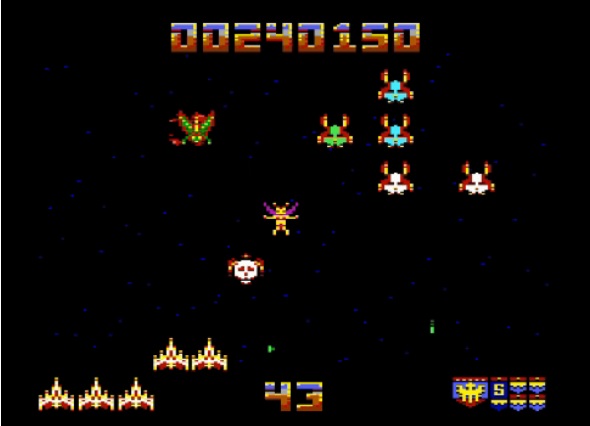
This really looks like spontaneous combustion. All three Bouncers will zip straight down then disappear after a while. These bug transformation features I believe are an homage to arcade Galaga which does something similar, but resemble flowers.
![]()
![]()
Upon level completion, your military rank which displays on the bottom right will advance by one. This is another homage to Galaga and is a good way to keep track of how far you progressed within a game. As you advance further into the game, new enemies will appear. Every four rounds there is a skull round. As is the case with the bee rounds, the skulls vacillate between shapes. They start out as a skull looking shape then switch to another shape which sort of resemble bunny rabbits. In these flying Skull rounds, there is a new feature introduced, barriers. The barriers block your shots giving the skulls time to complete their formation. They can be destroyed and will eventually go away on their own. At first, you only see these barriers in the skull rounds but in the later rounds 35 and up, they show up more frequently even in the Bee rounds.
The next new enemy introduced starting in round 31 are called “Hybrids“. They sort of look like flying crabs.

As you play, you will notice the enemies are color-coded. Their color denotes their physical strength. The darker they are the weaker they are, requiring fewer shots to destroy. For example, the white skulls are much weaker than the green ones. Brighter colors equal harder to kill.
There is a countdown timer on the screen, bottom center. Should you successfully destroy all the enemies with time left over, you will be awarded a time-based point bonus, 100 points per second remaining.
When the timer reaches 30 seconds, they will call in four reinforcement bees and if the timer is completely depleted to zero they will call in eight reinforcement bees. This helps to bring life to the game and keep it challenging.
After destroying all the enemies on the screen you proceed to the next round. There are fifty of these rounds. Included within these 50 rounds are four challenge rounds, four asteroid field rounds, and two boss rounds.
Rounds Layout
|
Rounds |
Description |
|
Rounds |
Description |
|
1-3 |
Galaga Style Rounds |
|
26-28 |
Galaga – Clear all Bugs |
|
4 |
Skull Round |
|
29 |
Skull Round |
|
5 |
Challenge Round 1 |
|
30 |
Asteroid Round 3 |
|
6-8 |
Galaga – Clear all Bugs |
|
31-33 |
Galaga – Clear all Bugs |
|
9 |
Skull Round |
|
34 |
Skull Round |
|
10 |
Asteroid Round 1 |
|
35 |
Challenge Round 3 |
|
11-13 |
Galaga – Clear all Bugs |
|
36-38 |
Galaga – Clear all Bugs |
|
14 |
Skull Round |
|
39 |
Skull Round |
|
15 |
Challenge Round 2 |
|
40 |
Asteroid Round 4 |
|
16-18 |
Galaga – Clear all Bugs |
|
41-43 |
Galaga – Clear all Bugs |
|
19 |
Skull Round |
|
44 |
Skull Round |
|
20 |
Asteroid Round 2 |
|
45 |
Challenge Round 4 |
|
21-23 |
Galaga – Clear all Bugs |
|
46-48 |
Galaga – Clear all Bugs |
|
24 |
Skull Round |
|
49 |
Skull Round |
|
25 |
Boss Round 1 |
|
50 |
Boss Round 2 |
When the games ends, the words “Game Over” is display in really large green textured letters.
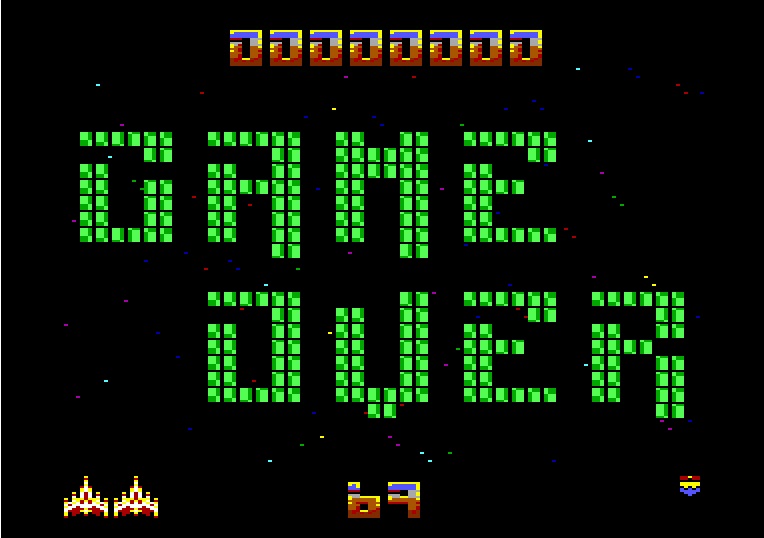

I love the fact that there is a mission debriefing screen after the game ends. Here, the mission time is displayed along with the number of shots fired. It also displays the military rank number you earned along with your “animal rating”. All nice touches. The “animal” rating for Rank 1 is “NEWT”, rank 2, “Deer”, rank 3, “Turkey”.
Should you make it all the way to round 50 and successfully defeat Boss #2, the game will end and you will achieve the top rank of 51. If you die on round 50 your rank will be 50.
Gameplay Modes:
In Galencia there are three game difficulties (E)asy, (N)ormal and (P)ro.
There is also a tournament mode which when activated will allow you to play the game in any selected difficulty. Tournament mode means you only have the ship or ships you started with for the entire game and are not awarded ANY bonus ships.

The high score table displays the top five scores achieved, along with the player’s initials and highest rank earned. Just right of the initials is a letter. This letter denotes the game difficulty, “E” for easy, “N” for normal, and “P” for pro. Just to the right of the score, a “T” will be displayed if the score was achieved in Tournament mode. I am thankful those two-letter denotations were added to the high score screen, but if you’re going to play some serious tournament mode games, you would definitely need to reset the high scores since attaining a high score is significantly more difficult in tournament mode. This is a minor nitpick, but I would have preferred separate score tables for each difficulty and tournament mode, similar to how it was implemented in the recent release of Super Cobra Arcade on the Atari 2600.
If you select “Easy” difficulty you will start with double fighters. The enemies fly in easier to avoid patterns and they fire back at you less often.
“Normal” is the default game mode. You start with a single fighter, standard enemy flight patterns and they fire at you frequently.
In “Pro” mode, you start with a single fighter. The enemies have much more aggressive flight patterns and are quicker! They attack more often than “normal” mode.
Keep in mind regardless of the difficulty selected, the game has a built-in difficulty ramp up as you progress through the rounds. I am not privy to the exact algorithm, but the game has a difficulty ebb and flow. Jay sent me this highly technical diagram to try to visually illustrate it.
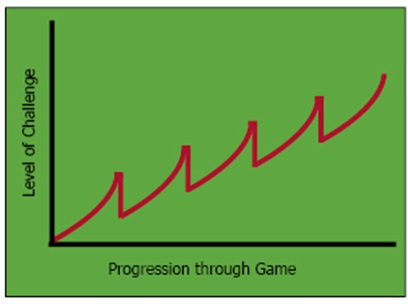
Scoring:

The score table display illustrates the bees in formation are worth 150 points each. The attacking bees are worth 250, while the Sirens are worth 500 points each. Although these are the main enemies you fight throughout the game, these are not the only enemies or obstacles that will gain you points. There are additional enemies in various rounds, challenge stages, asteroid challenge, boss battles, skulls, and Promethean stars which show up in the asteroid field challenge rounds.
Here are a few more items not listed in the score table:
Skulls in formation – 100
Skulls attacking – 250
Skull Barriers – 250
Hybrids in formation – 100
Hybrids attacking – 250
Boss Battle – lightning bolts – 100
Boss Battle – destroy boss – 30,100
Bouncers – 250 points
Hunter Killers – 250 points
Asteroid Field, all objects – 250 points
Promethean stars – 10,000 (By touching only, 250 if destroyed)
You are also awarded a bonus ship every 100,000 points.
Challenge Stages:
The challenge rounds are similar to that of the first challenging stage in Galaga. They occur in rounds 5, 15, 35, and 45. The main difference being when you successfully destroy all the enemies in a challenge round you are awarded either a spare ship, a double fighter or a point award. In Galaga, I believe you received a point bonus. Also, you do not have to remain directly in the center of the screen to achieve a perfect score as you do in Galaga. If you succeed in the challenge, a giant red heart drops down and is absorbed by your ship. The following round, Amy chimes in “is that for me, How romantic”. Should you fail to defeat all the enemies in the challenge, not only do you NOT get an award, you are also chastised by being told to “try harder next time”.

The asteroid field challenge rounds are original, fun, and should be something to look forward to. They occur on rounds 10, 20, 30, and 40. The real goal of these rounds is to capture the Promethean stars. You have 54 seconds to grab as many as possible. They are worth 10,000 points each. You earn the bonus by touching the star to your ship not by destroying it. If you are skillful you can rack up a bunch of them quickly to earn yourself a spare fighter or two. You have to be careful though because the asteroids are deadly. I found that moving twin ships in these rounds was not that much of a hindrance, however, it does make you a bigger target.
Boss Battles:

Just making it to a boss battle is a major accomplishment. There are two boss rounds in Galencia. The first one occurs in round 25 and the last one occurs in the final round of the game, round 50. In the Boss rounds, you battle a giant queen bee who hurls lightning bolts down at you once in a while. The timer is set to 55 seconds and she has a health meter at the top of the screen which looks a lot like, “beads”, did you catch that, “bee ds”. The queen has a few tricks up her sleeve including the ability to conjure up what looks like two vertical lasers swords. She is not that difficult to defeat, it just takes a lot longer because she can absorb a lot of hits. You have to outlast her.
Strategy:
The manual attempts to give you some tips in the form of questions. Is it better to clear the screen quickly and reap the timed bonus or take your time to maximize your points by being methodical? Should you go ahead and double up your ships or wait until after the asteroid field wave? The manual then sprinkles in this question. Is it best to clear the bees by columns or by rows? Are there hidden bonuses to discover? Such a tease… the manual goes on “There are lots of things happening under the hood and careful observation will help you learn the secrets of Galencia”. Jay mentioned there are some hidden bonuses, but they are not highlighted within the gameplay. This makes it difficult to tell when they are earned.
My strategy tips are as follows: Take advantage of the continuous auto fire mode by keeping the fire depressed. In general, try to clear out either the left or right side of a round first, before going to the other side. Do not attack the enemy when they are moving downward. Instead, wait until they are moving up, or in formation, then make your attack! On the rounds with skull barriers, I like to destroy them right away, but they will self-destruct after a while. On the skull rounds, eliminate the white skulls, the low hanging fruit, and get them out of the way first. Time your attacks to coincide with when the enemy attack stops. Eliminate the Siren as soon as possible especially on the later rounds as they have rapid-fire and are deadly.
Graphics:
I love the graphics in Galencia. I mean before you even start the game you see the polish creeping in. You have the three intro screens which are awesome. You have the great introductory sequence which plays when you start and another one when you finish the game. The fighter ship you pilot looks straight out of Galaga which is sweet. The enemies are multicolored and finely detailed. The Siren looks like flying female bees, and how can you not love the ebb and flow of the enemy formation? There’s a lot of graphical animation thrown into the game which can be taken for granted such as when the bees or Sirens turn over and attack. They are also animated in all of their configurations, when in formation, or attacking. The tractor beam is nicely animated. There’s an animated explosion when you lose a fighter.
On the main title screen, the games name “Galencia” is spelled out with nice graphics in which the letter “A” has a tail which if you are watching closely you will notice it furl and later unfurl. Also, the name Galencia is split in half horizontally, with the top half yellow and the bottom half green. These colors toggle periodically. In order to maximize available real estate on the screen, the score and timer values have been placed in the border areas of the screen. There are options that allow you to change the color palette of those numeric values. You will see an animated image of “Amy” chiming in from time to time telling you that you can press “f1 for options”. Let’s not forget about the animation where Ace Harper is running out to the fighter ship with his dog, Roxy, in tow.
Also on the title screen, you will notice a horizontal black line running down the screen. This effect did not happen by accident, nor was it as a result of the starfield simulation. It was done intentionally with sprites. Speaking of the starfield, this is another example of the kind of detail that makes the graphics so great in this game. This is no ordinary starfield simulation. You can adjust the colors of the simulation. A lot of thought and detail went into its design. If you would like to learn more about the starfield simulation, check out my recent video in which I attempt to deconstruct it through looking at the program’s source code.
Graphics Technical Note:
Nearly everything you see moving around on the screen, the bees, the siren, all the missiles, are accomplished by using sprites. Sprites are graphical elements that can be moved around independent of other graphics or text on the screen. Jay used what is called a sprite multiplexer in order to make this game work the way it does. The multiplexer is software that enables more than 8 sprites on the screen at the same time, a hardware limitation of the Commodore 64. In fact with all of the enemies present on the screen firing at you and with you firing back, including the score and timer indicator sprites, the multiplexer allows up to a maximum of 48 sprites on the screen at any given time. To me, this is amazing! Jay conveyed, the multiplexer uses the background interrupt to achieve this goal. The background starfield simulation is not a part of the background interrupt in Galencia. Instead, Jay says he makes a call to the star field code every single frame, 50 times per second in PAL systems and 60 times per second on NTSC systems.
Sound:
There are very few things that can single-handedly propel a game into greatness. Music and sound effects can do just that. In Galencia there are a total of six complete SID tunes or music tracks. These are extremely catchy and so far have not got on my nerves as some soundtracks do. I really enjoy them. The sound effects are also nicely done. There’s a sound for firing, enemy fire, destroying the enemy, dying, tractor beam, being captured, a sound for bonus awards, text transmissions from Amy, shooting the Promethean star, and rank is displayed. To me, the most amazing part of the music and sound is the fact that they were designed by a sixteen-year-old gentleman who goes by “pulse bot” or “Highway Guy”. It’s great to see young people getting involved and making contributions to the retro gaming scene. For the most part, the sound system is seamless. These effects play on top of and compliment the background music.
Bugs:
You’ll be hard-pressed to find any problems or glitches within this game. It is just so polished. Having said that I did run into one problem that I’ll describe here. I was playing in round 49. My ship was all the way in the right corner, being attacked by the last enemy on the screen, a “Hunter Killer”. We both died at the same time. To start level 50 my ship was invisible but I can still move left and right and fire at the final boss. Upon dying my ship re-appeared. Not sure if this problem was limited to level 50 or not.

Ideas for Galencia 2.0:
For the next version of Galenica I would like to suggest the following:
It would be neat to have some power-ups once in a while. These power-ups could grant rapid-fire, shields, new missiles, or even temporary invincibility would be sweet. I definitely would like to see more types of bug enemies introduced along with new resting and attack formations. The more the merrier. I’d like to see an in-game method of toggling the music. A bonus granted for the number of ships you have left at the end of the game would be nice. On the mission debriefing screen, I would like to see the number of hits and hit ratio added to the statistics. These were my idea’s, I’d be interested to hear what ideas you guys can come up with.
World Record(s):
Over at twingalaxies.com, there are no world records listed for Galencia.
Over on Highscore.com, there is no entry for Galencia, but I did request it be added a few weeks ago.
Over on cbm8bit.com, there are a few incredible high scores. The highest score voted legitimate is 1,068,800 by naufr4g0 on May 9th, 2017.
https://cbm8bit.com/highscores/game/c64/?game=Galencia
Packaging:
The deluxe version of Galenica is beautifully packaged. I bought the deluxe cartridge version but what I received was much more than what I expected. All of the content is enclosed in a nice box which even has a humorous message about how to operate the toilet in zero gravity. You can tell, just as polished as the game is, the packaging has followed suit. Contained within the package was a really nice glass coaster with an image of the game. Along with the cartridge, It contained a diskette version of the game, a keychain with a bee, and even a really nice neckless. The neckless looks like earth with the Sun coming up behind… Or is it Yenoh, where the bees originated? To top it off there are the professionally printed manual and posters. I believe this quote from Jay says it best:
“We believe Galencia sets the new standard – double thick-walled box (really rigid and heavy) – full-color printing throughout including under the lid and the sidewalls of the box (the part with the review quotes) custom cut velvet covered inlay (where the cart sits, this is different depending on the version you buy) the number of extras, the full color illustrated manual – all combined we believe this is the best C64 packaging right now!”
Ports:
Currently, Galencia has not yet been ported to any other systems. However, if you check out the Galencia Moments link you will see Galencia running on a few different hardware platforms via emulation including cellphones and some kind of Gameboy device.
Podcasts / Other Video Review coverage:
There is a nice audio interview of Jay Aldred from June 19, 2017.
https://pressplayontape.podbean.com/e/developer-diaries-galencia-with-jay-aldred/
Here’s a few written reviews I’ve come across.
Review 1:
http://8bitstuff.com/2017/11/19/galencia-big-insect-must-die/
Review 2:
http://www.ausretrogamer.com/galencia-blasts-onto-your-c64/
The game was reviewed in the German edition of the Return Magazine. Jay says a few more magazine articles are forthcoming. Galencia will be covered with a mini-review in issue 16 of Freeze64 Magazine.
Here is the Galencia Moments Twitter thread:
https://twitter.com/i/moments/893576963390132224
Let’s not forget about the famous Cat which is on the posters and belongs to one of the game’s artists, Lobo. The kitty is otherwise known as “the inspector”.
Conclusion:
Galencia is a total throwback to the eighties. With it’s Galaga inspired design, Galencia reminds us of what can actually be done on a Commodore 64 in the hands of a great design and programming team. There hasn’t been another Commodore 64 homebrew I’ve been more excited about than Galencia. It plays a lot like Galaga and borrows some of its design, at the same time Jay Aldred has managed to make it unique in his own way. With 50 levels of gameplay including challenge waves, boss battles, and six original soundtracks, Galencia provides many hours of entertaining gameplay. Every time the game ends, I have the instant urge to start back up a new game and try to surpass my latest score.
Highly recommended.
I want to thank Jay Aldred for putting up with me and answering all of my questions in preparation for this review. I deeply appreciate it.
*****
But wait there’s more:
Galencia was developed using the CBM program studio. It can be had for as little as $4.99 for the ROM over at
https://galencia.itch.io/galencia
To obtain a physical copy of the game head over to the Protovision website:
https://www.protovision.games/shop/product_info.php?products_id=206&language=en
Currently, Galencia is physically available in Tape, Disk, or cartridge formats. The Protovision site also has a few posters available for purchase. Also, if you are interested in Galencia Merchandise, head over to this site:
http://galencia.dizzyjam.com
They have a nice selection of tee shirts, hoodies, coffee mugs as well as other Galencia branded products.
I am going to finish this review off by reading the game credits from the manual. Congratulations to the following contributors who helped put together this fantastic game:
• Jay Aldred: programming and graphics
• Pulsebot: all music and some sound effects
• Flemming Dupont: concept art
• Saul Cross: additional graphics and sound effects
• Jakob Chen-Voos – Protovision
• Lobo: box and manual
• Indian Nick Winder, Martin C Grundy – Introduction Story
• Mark Hardisty: manual back cover illustration
Youtube Original Post Date: 12/24/2017

